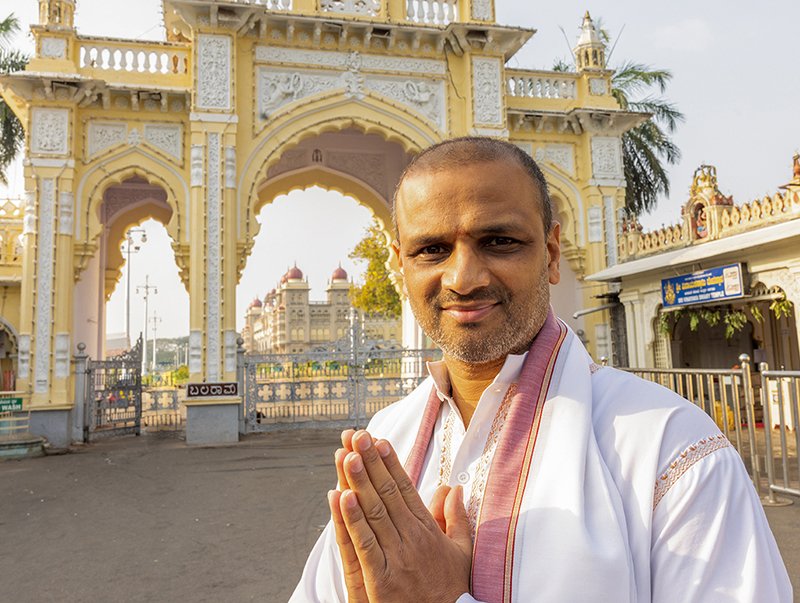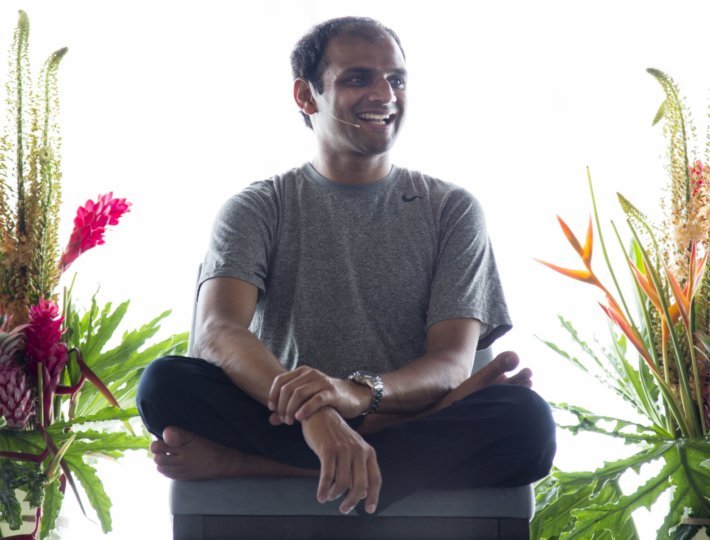While listening to an episode of “On Being“, the podcast hosted by Krista Tippett, I came across a remarkable interview with renowned travel writer Pico Iyer. The acclaimed author, who penned The Art of Stillness: Adventures in Going Nowhere, doesn’t claim to be a spiritual teacher. But as Tippett said, “He has become one of our most beloved and eloquent translators of the modern discovery of inner life.”
So you could imagine my surprise when Iyer revealed that he doesn’t meditate, at least not in the traditional sense. Instead, he spends much of his life “in the middle of nowhere”—that is to say, untangled from many of the distractions of modern life. He lives almost completely free of technology in a two-room apartment in Kyoto, Japan, immersing himself in stillness.
“… I wake up, I have breakfast, I make a five-foot commute to my desk, and then I just sit there for at least five hours trying to sift through my distortions and illusions and projections and find what is real behind the many things I’m tempted to say,” he said in the interview with Tippett. “And I think a writer is in the blessed position because, in some ways, our job is to sit still and to meditate for a living. So although I don’t have a formal spiritual meditation practice, I do spend much of my life in the middle of nowhere, stationary. And I’m really grateful for that.”
For those who are intimidated by seated meditation, or feel they don’t have time to dedicate to practice, this type of mindful living may sound like an appealing path to clarity. But what if you don’t live in such a serene setting and your daily life is consumed by caring for children or juggling two jobs? When silence is scarce, is it possible to practice Iyer’s approach to meditation?
A Closer Look at Mindfulness
“[Mindfulness is] about paying attention to what’s going on,” says Judson Brewer, M.D., Ph.D., director of research at the Center for Mindfulness at UMass Medical School. “When somebody’s living mindfully, they’re really being there; as opposed to half-there or multitasking or paying attention to three things at once.”
As humans living in the modern age, we’re bombarded by a constant flow of attention-demanding stimuli. Mindfulness is really about directing your attention in a focused way so that you’re not being pulled along on autopilot.
“It’s noticing that urge to pull away, but not habitually acting on it,” Brewer adds.
Living in such a way pays off on a number of levels. According to the American Psychological Association, mindfulness is linked to reduced stress, improved memory, increased immune functioning, and more.
Kristen Race, Ph.D., founder of Mindful Life, adds that mindfulness actually strengthens the neural circuitry in the prefrontal cortex of the brain.
“That’s the part of our brain that helps us be more engaged in our relationships,” she says. “It helps us think more clearly. It helps us solve problems.”
Using Everyday Activities to Live a Mindful Life
For people who don’t have a formal meditation routine, informal mindfulness practices are easy ways to elevate awareness. It turns out that our greatest teachers can actually be mundane, ordinary tasks.
In a recent study out of Florida State University, researchers found that washing dishes in a mindful way significantly increased inspiration and decreased stress. All this required was for the participants to pay attention to the sensory experiences of the activity (the smell of the soap, the warmth of the water, etc.).
According to researchers, approaching any activity in an intentional way disrupts the mental chatter that plays on a loop in our heads. Instead of brooding over the past or worrying about the future, present-moment awareness allows us to be in the now.
“Often you arrive somewhere and you have no idea how you got there because you were mentally checked out the whole way,” says Race. “Instead, notice your environment. When you’re walking your dog, listen to the birds. Use all your senses to be completely aware of the present moment.”
Perhaps mindfulness expert Jon Kabat-Zinn put it best: “When you’re in the shower next time, check and see if you’re in the shower,” he told “60 Minutes” in a 2014 interview.
Translation: Be totally present for the experience.
“When you’re in the shower next time, check and see if you’re in the shower.”
Being Mindful with Our Emotions
Mindfulness in “real life” goes beyond daily tasks. Honing our awareness also applies to our emotions and, in turn, our interactions with others.
“It’s really about helping to see when we’re getting in our own way; when we’re taking something personally or getting caught up in something,” says Brewer. “When we can pay attention and notice when we’re getting caught up, we can more easily let go.”
In recent years, I’ve dealt with transient periods of anxiety. When it got its claws into me good, I would spiral into a full-blown panic attack. The one and only thing that has helped me transcend this has been present-moment awareness (a.k.a. noticing anxious feelings when they arise, then practicing mindful breathing until they pass).
Swap out “anxiety” for anger, judgment, or competitiveness…mindfulness helps us become aware of our own negative thought patterns, which directly shapes our reactions to them. The domino carries over into how we interact with those around us.
“It’s like the X baseball team being better than the Y baseball team,” says Brewer. “Someone can have that view and it can cause a lot of suffering, and arguing with the other baseball fan probably isn’t going to help the world be a better place.”
Being Mindful with Our Relationships
One key benefit of mindfulness is that it enhances our empathy. A 2013 study published in the journal Psychological Science found mindfulness practices to increase both compassion and interpersonal harmony.
“I think that when you have a mindfulness practice, you are more aware and sensitive not only to your own feelings, but to the feelings of others,” says Race. “We’re better able to recognize how our actions are being perceived. We’re better able to read situations and engage in problem-solving in a more effective way.”
When it comes to relationships, arguments are simply par for the course. But what if instead of digging in your heels and sticking to your viewpoint, you allowed your partner to feel what they’re feeling without passing judgment? What if you extended a compassionate ear, loosening your grip on the need for you to be right and them to be wrong?
Related: Are You Over-Communicating in Your Relationship?
Give it a try during your next argument with your partner. Chances are, you’ll have a more productive discussion.
“When we feel emotional or triggered or in the midst of conflict, it goes back to us operating from the survival mechanism in the brain, or what I call the alarm part of our brain,” Race adds. “When we’re feeling triggered like that, that’s not the best time to solve problems because that alarm overrides the prefrontal cortex. It makes it difficult to even listen effectively.”
Remember, practicing mindfulness strengthens the prefrontal cortex, making us better able to weather these storms. It also helps us recognize that another person’s anger/resentment/hostility—which are all forms of suffering—aren’t things we need to personalize. On the contrary, they’re feelings that are begging for compassion.
Mindfulness can also be a transformative parenting tool. Take a trip to any local park and you’ll likely notice a dominant trend: Kids playing on the playground while their parents peck away at their smartphone screens. Being mindful with our children is something that’s as easy as putting away the electronics.
“Notice if you’re caught up in your phone, then see if you can put your phone away and look your child in the face when they ask you a question,” says Brewer. “Often, just that amount of attention is enough for them to know they’re still loved in that moment.”
Mixing Mindfulness with a Formal Contemplative Practice
While informal mindfulness practices are indeed valuable on their own, supplementing these efforts with a formal contemplative practice isn’t a bad idea.
“It’s difficult to only practice informally. It’s really tempting and sounds great and easy, but it’s hard,” says Race. “If you can take the time to spend five or 10 minutes sitting on the cushion and practicing mindful breathing, you’ll feel more present and engaged throughout the day.”
A regular meditation practice will only optimize your efforts to be more mindful in your day-to-day life. Race adds that it also primes the brain so that mindful living comes more easily. If a formal practice seems intimidating, start with baby steps. Just a few minutes a day can set the stage for more intentional living.









Comments (1)